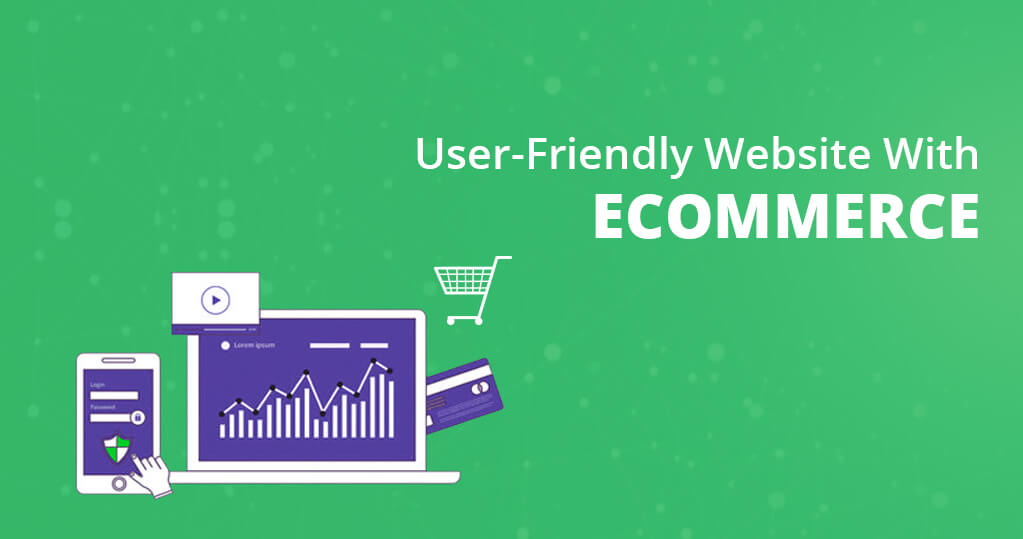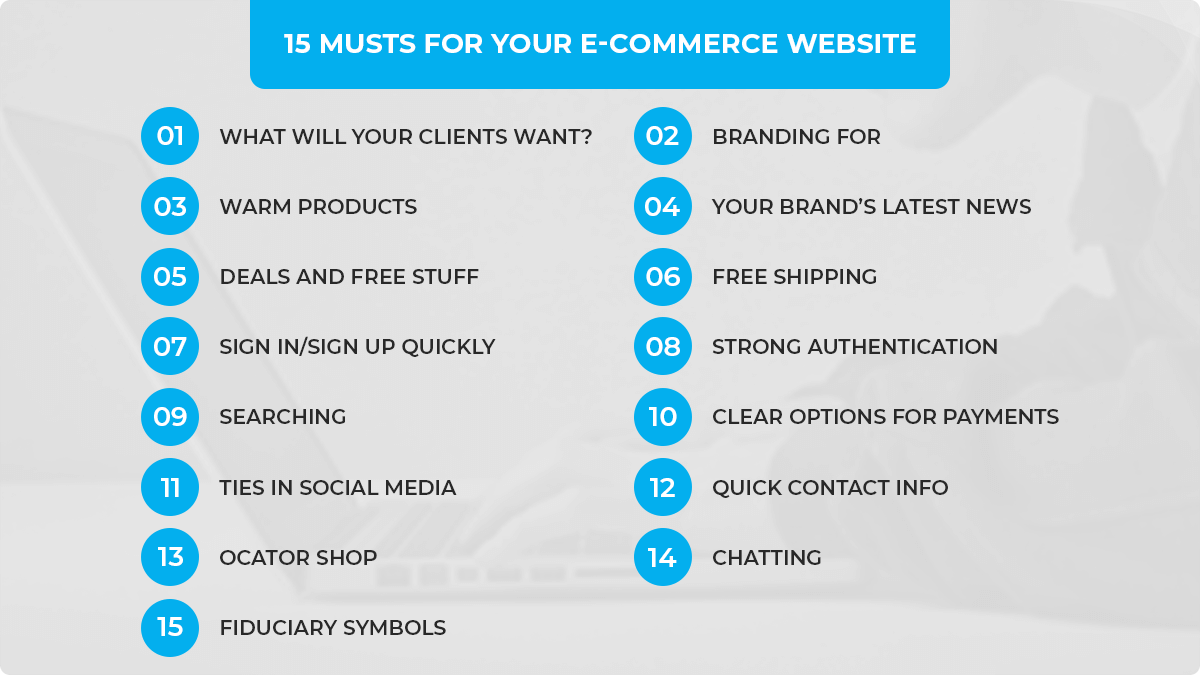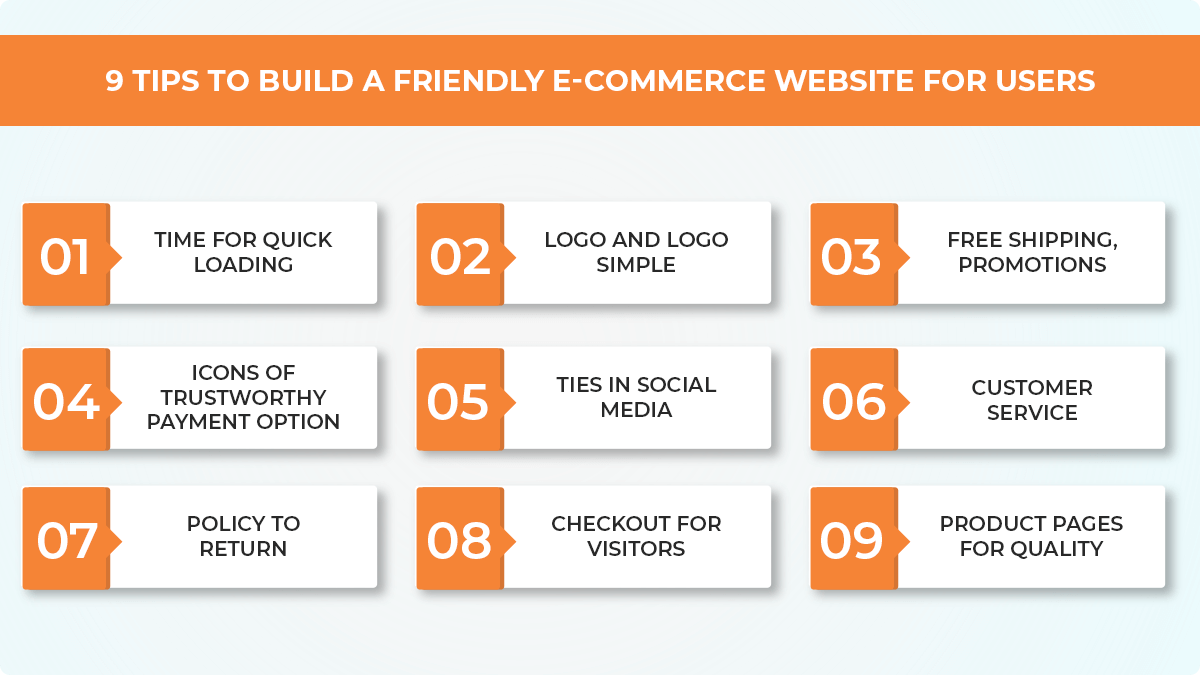You have many items on your head as a company owner, but above all, customer service enhancement. Because of their end-user offerings, e-commerce giants such as Amazon, Alibaba, eBay, and many others will name the industry. Amazon is always known for its customer-centered practices, and that’s how it made everyone’s favorite.

Well, it’s not that simple to turn your company into a brand, but it can be easy to make your web store user-friendly!
Let your website talk about your goods and services to your clients. Are you curious about how it can be done on your website? Don’t worry; the audience wants to be listened to. We understand that you are eager to find ways to make your website user-friendly. But, before you go on, you have to know the fundamentals.
What Is Website-Specific User-Friendliness?
A user-friendly website is an art of designing a website in a user-friendly format. You have to make your website’s layout equally enticing to your customers when you want it fancy. As per the feedback received, the layout of your store must be planned. It doesn’t mean you have to listen to it all and disregard the norms. However, this means that you have to find the best way to customize your website layout according to its usability.
Do not confuse your consumers with the characteristics and features offered. Be careful about the range and implementation methods, from graphics to the features you want to add to your shop. Your ultimate aim is to give your apps and end customers a seamless experience.
15 Musts for Your E-Commerce Website

1. What Will Your Clients Want?
You want a few things from your users before they give you their dollars or their trust. Some of this stuff is real; some of it is intangible. Some of these things are good for you, all of them are good for your clients, and if you want to keep your customers coming back, all of them are important.
2. Branding For
Your clients want to distinguish your platform from other sites clearly. They want to see your logo and the colors of your company in ways that are identifiable immediately. You will have to find ways to distinguish your site if your brand’s colors are similar to other brands, particularly competitors. Confused consumers are less likely to feel like a good experience has been had.
3. Warm Products
Shoppers would like to find out what’s hot. Only tell them upfront. Please don’t make them hunt for the things they are searching for that you recognize.
4. Your Brand’s Latest News
If the news has favorably listed your brand, many shoppers want to know about it. This increases their confidence in the selection of your goods. Please do not depend on them to see these news stories on another website. Make sure your site has easy access to news stories.
5. Deals and Free Stuff
Individual clients are indeed interested only in sales and free things. If they know that they can rely on offers and free things from your brand, it’s probably because you’ve taught them that way. On your homepage, it takes tiny real estate to ensure that these users get where they want to go with a single click.
6. Free Shipping
There’s just about everyone doing it. It may be for a minimum buy, or it may be a declaration of loyalty, but these days free shipping is almost like table-stakes in online shopping. It’s undoubtedly a significant factor in the consumer relationship’s lifetime value.
7. Sign In/Sign Up Quickly
Before putting them on your e-commerce platform, test such forms with real users. You certainly don’t want to cancel a purchase for a new client because the sign-up process is frustrating.
8. Strong Authentication
Some customers may complain about strict criteria for authentication, but all customers appreciate knowing that you have the best interests in their security and identity. Keep them that way until you define authentication criteria. Playing around with this aspect is just going to alienate clients.
9. Searching
Make it quick with a robust search feature for consumers to find what they are searching for. This includes a little bit more than providing a search field on your websites. Not only should products, articles, reviews, etc., be indexed, but with specific metadata and keywords, all should be labeled appropriately.
10. Clear Options for Payments
On the last page of the check-out process, don’t let your client find out that their international or American Express card will not be approved for payment. Early in the process, if you make this little information clear, customers will not be disappointed by surprise, and abandoned carts will not frustrate you.
11. Ties in Social Media
People love to post their purchases on social media for some reason. Take advantage of this and on every product page, placed social media links. If they see something they like, even if they don’t make a purchase, sharing it will help inspire them to come back later and make the purchase.
12. Quick Contact Info
Your contact details and customer service phone number, hours of operation, address, and other contact information should be incredibly easy to discover. You are essentially telling your customers you don’t want to be found if you bury this detail. This message will be heard loud and clear by your customers and will go somewhere else.
13. Locator Shop
Even if you only have one physical location, have a map that displays your location on your blog. Include the printable instructions. When you have several sites, this is much more important.
14. Chatting
While on a product page, opening a chat session to ask a few questions is much simpler for many consumers than dialing a number and sitting on hold. This is a great way, especially for younger generations, to increase conversion rates.
15. Fiduciary Symbols
Protection is preeminent. Your clients want to know that you have their supporters when it comes to protecting and encrypting transaction details. A simple way to show that you are constructive in this respect is to display the logos of the companies (McAfee, Verisign, GeoTrust, Paypal, etc. that manage this feature. These logos have become symbols of a trustworthy partner for the majority of your clients. Leverage this authority.
9 Tips To Build a Friendly E-Commerce Website For Users
Every online merchant needs to make it a habit to think from a customer’s perspective to run a well-rounded and profitable online company. As I often emphasize, online shoppers have a limited attention span, little patience, and can quickly click through your web and decide their interest in a few seconds.
This is why clients search for the top 10 items on your e-commerce platform to ensure that you have all your bases covered to turn a tourist into a repeat customer!

1. Time for Quick Loading
It is one of the first elements to consider when building an online store, and it will be one of the challenges you face in providing a quick and wholly optimized online shop for your customers. Recent studies have shown that pace is a critical expectation to be met, as, after 3 seconds of waiting for it to load, most online shoppers leave a site. On GTmetrix, you can monitor your site’s speed and efficiency. Not satisfied with your synopsis? Several variables affect the speed of your pages, including the size of your photos and your hosting provider. Make sure a reputable web hosting company hosts your online shop.
2. Logo and Logo Simple
Presenting a simple logo and brand is part of catching a visitor within the first few seconds of accessing your e-commerce site. Your logo should be easily recognizable, and your branding should be so simple that if your online shop is selling items they are interested in, a customer will quickly determine. Take a look at their logo at these two PrestaShop stores, and you can understand within seconds what items they still have.
3. Free Shipping, Promotions
Online shoppers are knowledgeable shoppers who always look for a bargain. Promotions are an immediate eye-catcher, mainly free shipping, as this is one of the big turn-offs for online shopping customers. You’re increasing your conversion rate, reducing abandoned carts, and increasing your average order value by enticing your customers with promotions. Make sure that your promotions, are highly visible on your homepage and put across your site:
4. Icons of Trustworthy Payment Option
It would help if you showed your reputation to turn a tourist into a client. One of the best ways to gain visitors’ confidence is to comfort them on your site with highly visible icons of trustworthy payment options. Although the retail industry is turning rapidly towards digital retail, many customers are still reluctant to share their bank details with a new store. By merely installing trustworthy payment icons on your web, reassure your guests.
5. Ties in Social Media
Online shoppers are social beings that are devoted and want to make sure you are too. To see how many followers you have, how much you share, and how well you present yourself as a leader in the field, new tourists can click on your social media buttons. Make your buttons on social media available throughout your web. You can also inspire clients to follow your social media networks or promote your goods with social media sharing buttons through a promotion. In our latest blog posts, learn all about leveraging social media on your e-commerce site: the value of using social sharing buttons on your online store and the keys to your e-commerce site behind the best social media practices.
6. Customer Service
The availability of the right customer service channels in your online shop is another feature used to reassure tourists. The following customer service components are searched for by visitors:
– Information on contacts
-Talk live or click-to-call
-The Social Media
—On Us
To improve conversion rates and create customer loyalty, you want your e-commerce platform to provide the same level of customer support and human interaction that a physical store does. You boost sales and drive more frequent customers by providing your tourists the confidence to shop on your web.
7. Policy to Return
As a buyer, before making a purchase, you look for one of the first items. Since it is difficult to be 100 percent sure that you are pleased with a product you buy on the internet, you want to have a good understanding of an e-return shop’s policies. Don’t make clients go nuts searching for your policy; on the footer of your site, an excellent place to share your return policy so that clients can link to it from every tab. In your return policy, be as transparent and precise as possible not to leave space for clients to hesitate. Discover in this merchant-favorite blog post the ten ways to lower returns for your online shop.
8. Checkout for Visitors
Our frustrated and modern customers, searching for a quick and user-friendly experience, still seem to come back. Give your clients the chance to check out with a guest check out or express check out choice quickly. While you want to give consumers a fast checkout process, if they share their data with you, you also want them to realize the advantages they can reap, including discounts, exclusive deals, and customer loyalty points. Try to encourage the advantages of having an account, but if that is what they want, make it easy for clients to quickly make a transaction.
9. Product Pages for Quality
The sales pitch for your goods is the introduction of your products with quality explanations and photographs. There are no salespeople in the e-commerce world to persuade you to buy an item, which is why it is so essential to be persuasive on your product pages. In my blog post, How to write product descriptions that improve sales and raise SEO, consumers are searching for exact details on product descriptions to learn the best way. Also, online customers need robust and detailed photographs.
